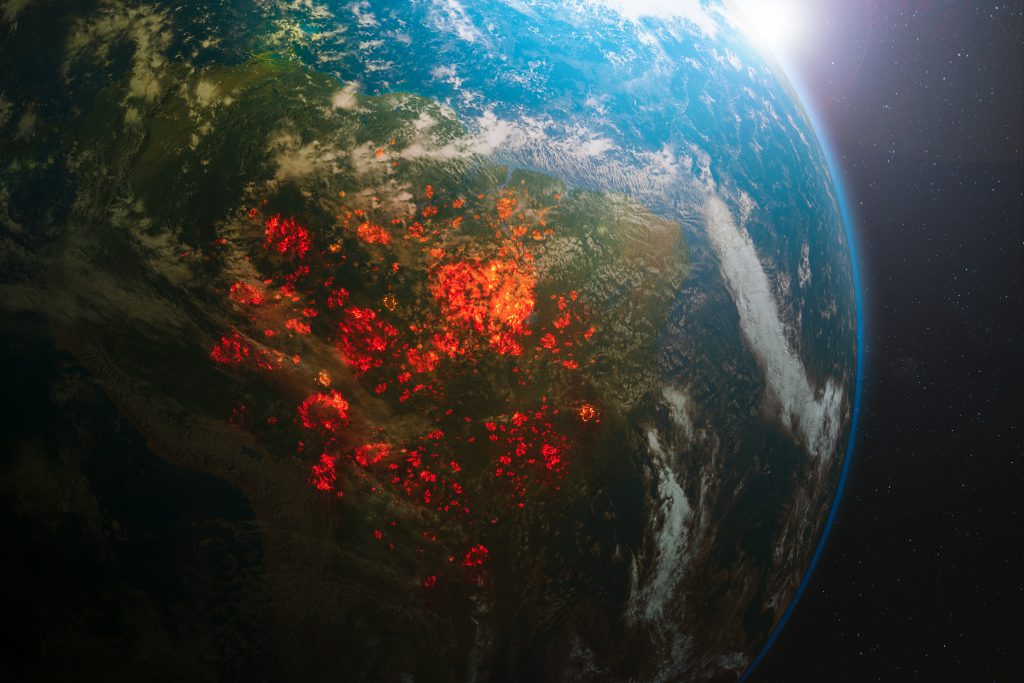Morocco is increasingly becoming a ‘paradise’ for paedophiles coming from all around the world. Given its easy accessibility to Europe, the large number of impoverished children and the taboo nature of this issue, Morocco is the perfect destination for sex tourism and child sexual exploitation. Moreover, the weak legal and law enforcement structures in implementing and protecting children’s rights is another key element in continuing this form of violence against children. In fact, most of the times, abused children are seen as offenders rather than victims, with all the socio-legal consequences which are linked to this stereotype.
Human trafficking of children for sexual purposes
As a key transit route for victims of trafficking, a destination for sex tourists, and the origin country of many women prostituted abroad, Morocco is currently mired in several types of sexual exploitation. According to the US Department of State’s 2021 Report on Trafficking in Persons (Fondation Scelles, 2016), Morocco is placed in the Tier 2 Watch-list, meaning it has taken steps to eliminate human trafficking, but it does not yet meet minimum standards (Prafcke, 2021).

Moroccan children have been documented as trafficked for sexual purposes to Europe and the Middle East, while foreigners have also been identified as engaging in the sexual exploitation of children in travel and tourism within Morocco’s borders. Separately, in Morocco, 400 child victims of trafficking were reported between 2012 and 2015, of which the majority were identified as trafficked for sexual exploitation (Prafcke, 2021).
In addition to this alarming context, the numbers and statistics related to sexual exploitation in Morocco are greatly underestimated because of the lack of data collection and victim identification in Morocco (Fondation Scelles, 2016). In fact, it is difficult to know the exact scope of child sexual exploitation in Morocco because there is inadequate data collection on the issue (Fondation Scelles, 2016).
There is no centralized national system of data collection, and there are no agreed-upon definitions distinguishing between different types of sexual violence against children (UNICEF, 2014).Moreover, the taboo nature of prostitution within the region and the stigma associated with anyone involved in prostitution contribute to the underreporting of cases of sexual exploitation of children in prostitution as well as to its ‘under-cover’ nature (ECPAT, 2020).
Sex tourism and its damaging influence on children
Sex tourism is a thriving industry in Morocco. Due to its accessibility to Europe, and the large number of impoverished children in Morocco, it has become a known destination for foreign paedophile sex tourists (Fondation Scelles, 2016). According to the director of Defence for Children in Morocco, many variables contribute to the phenomenon of sex tourism, such as “the wealth gap between the rich and the poor in the country, the booming of the tourism industry, and the weak legal and law enforcement structures in implementing and protecting children’s rights (which) lead to tourists who travel to Morocco specifically looking for sex with children” (Fondation Scelles, 2019).
Nevertheless, the government refuses to recognise the presence of sex tourism in the kingdom, fearing that it will damage the reputation of Morocco as a cheap, safe and family-friendly destination (Fondation Scelles, 2019).
There are no official figures on child prostitution in Morocco and no governmental study has been carried out on this subject. The term “paedophilia” does not exist in Moroccan legislation. This misinformation on the part of the authorities and the lack of institutional support make it all the more difficult to combat the sexual exploitation of children (Fondation Scelles, 2019).
A video report released by France 24 in 2011 revealed how intertwined sexual exploitation of children is with travel and tourism in Morocco. The report shows how Morocco has been painted as a paedophile “heaven” for Europeans, allowing easy access to disadvantaged children, with the approximate price of spending the night with a child costing tourists a mere 30 euros for the night.
According to the report, the practice of tourists picking up children for sex has become normalised and some of the youth interviewed noted that this survival sex was the only means of financial income available to poverty-stricken families (ECPAT, 2020). In fact, pimps are widespread, soliciting girls, even within schools, to have sex with tourists in the evening, and “despite relatively strong legislative frameworks, corruption could undermine progress by buying silence from some law enforcement” (France 24, 2011).
The Moroccan government has made some efforts to combat sex tourism and the sexual exploitation of children. For instance, the “Moroccan Committee of Responsible Tourism” was established in 2007, and a guide to responsible tourism is handed out at foreign embassies and Moroccan points of entry, such as airports. The guide emphasizes that sex tourism is a human right abuse that is illegal in Morocco, and states the punishments for such crimes (UNICEF, 2014).
Moreover, private companies such as hotels have also taken steps in order to fight child sexual exploitation and sex tourism by promoting procedures to detect cases of Sexual Exploitation of Children in Travel and Tourism (SECTT) (ECPAT, 2016). Despite the effort, there are very few reported cases of sex tourism at hotels in Morocco because the practice has moved to other locations that are less frequently monitored than hotels (Fondation Scelles, 2016).
Social perceptions of the sexual exploitation of children are still too often stereotyped. Youth are seen more as offenders offering debauchery services shameful to their communities, rather than as victims of exploitation in their own right. In some cases, the parents and family of the child victim may even benefit from this exploitation, without measuring the physical and psychological consequences for the child. Families and communities remain the guarantors of the protection of their children, so it is important to strengthen their skills and capacities so that they are able to play their roles effectively (PAX Project, 2017).
Finally, case reports do not always lead to the child being put out of harm’s way and the abuser being prosecuted. The inability of local authorities to respond to the phenomenon often leads to the discouragement of the affected population from submitting these reports to competent authorities. Lack of knowledge of procedures internally or with competent services further hinders reporting decisions.
On the other hand, the reporting is sometimes erroneous, insufficient or too late for the reported case to be properly studied both at the local level and at the level of the police services. The understanding of police authorities must be strengthened since it is they who intervene to put the child out of harm’s way and prosecute abusers (PAX Project, 2017).
Victims and perpetrators

According to the findings of a 2014 study by UNICEF (UNICEF, 2014), one of the main factors influencing whether or not children are sexually exploited is their home environment. Children from impoverished families or whose families did not play an active role in their lives and education were found to be more at risk of sexual exploitation.
Street children are more likely to be exploited, especially those living in cities like Marrakech (Fondation Scelles, 2019), Agadir, Essaouira, Tangiers and Tetouan (Morocco World News, 2015). According to a report by Morocco’s General Directorate for National Security in 2012, 67 per cent of sexual violence against children in Morocco occurs in the streets (UNICEF, 2014).
Furthermore, a 2003 study done by the NGOs ECPAT International and Bayti found that out of a group of 530 North African children living in difficult situations (especially on the street), 46.5percent had been subject to sexual violence (UNICEF, 2014).
A report by the Coalition Against Sexual Abuse of Children (COCASSE) has found that the majority of victims were aged between 5 and 14 and that many of the reported abuse cases were against boys (69 per cent). The report studied a total of 360 sexual offences against children between 2010 and 2015 and found that perpetrators are often members of the family. Sexual offences against minors are also committed by relatives, neighbours, strangers and teachers (Morocco World News, 2015).
COCASSE has revealed a significant year-on-year increase in the number of sex offences against children in Morocco. In 2012, the research showed that a total of 65 sexual crimes against children were recorded, compared to 76 cases in 2013 and 81 in 2014. For the first months of 2015, 42 cases of sexual abuse and exploitation of children have been recorded (Morocco World News, 2015).
The report has also found that cities, where sexual abuse against children is rampant, are also the cities that attract the highest numbers of tourists. The cities are: Agadir, Marrakech, Essaouira, Tangiers and Tetouan. Foreign paedophiles are taking advantage of the shortage in child protection structures in Morocco and the leniency of the Moroccan justice system against the perpetrators of such crimes (Morocco World News, 2015).
Morocco’s future steps to end child sexual exploitation
Morocco adhered to almost all international human rights instruments, in general, and those related to children’s rights in particular, including the United Nations Convention on the Rights of the Child (CRC) and the Council of Europe Convention on the Protection of Children against Sexual Exploitation and Sexual Abuse (Lanzarote Convention, 2007) (UNICEF, Amane and CNDH, 2014). In addition, Morocco has also outlawed child pornography, the sale of children, and sexual assault of children by signing the Optional Protocol on the Sale of Children, Child Prostitution and Child Pornography in 2001 (UN Treaty Body Database, 2022).
Morocco also took part in many world conferences on child sexual exploitation for commercial purposes (Stockholm in 1996, Yokohama in 2001, and Rio in 2008) and it hosted, in 2001 and 2004, the Arab conference and the African conference on the exploitation, sexual abuse, and violence against children (UNICEF, Amane and CNDH, 2014). In addition, in 2016, Morocco adopted laws on human trafficking, even if the legislation does not provide for penalties other than those applying to the trafficking of human beings in general (Official Bulletin, 2016).
From a national standpoint, in 2011, Morocco adopted Law No. 37-10 which focuses on providing victims of sexual violence and their families with protection as well as legal and medical assistance (UNICEF, 2014). Nevertheless, under articles 497-503 of the Moroccan Penal Code, minors exploited in prostitution are convicted instead of being identified as victims. In fact, they are liable to one month to one year in prison for having sexual relations without being bound by marriage (for heterosexual people). Moreover, also male prostitution is prohibited because homosexuality is illegal in Morocco.
Children exploited in prostitution are convicted instead of being identified as victims. This is because the Penal Code is not precise enough on these issues and leaves it to the judges to decide according to their own judgement. Their poor knowledge of gender issues and lack of training on these subjects do not help judicial decisions, which often work against women and girls in prostitution cases (Fondation Scelles, 2019).
These laws remain insufficient in order to protect children from sexual exploitation, also given the fact that traffickers are rarely prosecuted because of corruption. Few victims dare to come forward to testify against traffickers and are often deterred by the length of trials (Fondation Scelles, 2019).
On the part of the institutions, it is important to reinforce reporting mechanisms which can detect easier way potential victims and provide them with adequate assistance, from a legal, psychological and health perspective. To contribute to this goal, different local NGOs have started acting to promote the fulfilment of children’s rights and to protect them from sexual exploitation.
As a civil society, it is important to continue raising awareness on this issue in order to fight against the stigmatization and taboo related to this topic and to promote the protection and fulfilment of every child’s rights. Local and international actors have an important role in preventing harmful practices against children and in raising awareness of the violations of children’s rights.

Humanium, as an international actor, strongly condemns sex tourism and any other kind of violation of children’s rights and dignity, and it advocates for raising awareness of this issue in order to prevent reiterations. We are working to create a world where children can realise their full rights through raising awareness of such issues and working with local NGOs to create a change. If you want to contribute to our cause, consider making a donation, volunteering or becoming a member.
Written by Arianna Braga
References:
CRC – Convention on the rights of the child (1989), Treaty no. 27531. United Nations Treaty Series, 1577, pp. 3-178. Retrieved from: https://treaties.un.org/doc/Treaties/1990/09/19900902percent2003-14percent20AM/Ch_IV_11p.pdf, accessed on 21 August 2022.
ECPAT (2016). Expert Paper – Combatting the sexual exploitation of children in travel and tourism: A historic commitment from the Accor Hotels Group. Retrieved from: https://ecpat.org/wp-content/uploads/2021/08/Accor-Hotels-Watch-Programme.pdf, accessed on 21 August 2022.
ECPAT (2020). Regional Overview: Sexual Exploitation of Children in the Middle East and North Africa. Retrieved from: https://ecpat.org/wp-content/uploads/2021/05/Regional-Overview-Sexual-Exploitation-of-Children-in-the-Middle-East-and-North-Africa-ECPAT-research.pdf, accessed on 21 August 2022.
Fondation Scelles (2016). Maroc country page, in Fondation Scelles, Charpanel Y., Prostitution : Exploitation, Persecution, Répression, Ed. Economica, Paris, 2016 Retrieved from: https://www.fondationscelles.org/pdf/RM4/1_Book_Prostitution_Exploitation_Persecution_Repression_Fondation_Scelles_ENG.pdf, accessed on 21 August 2022.
Fondation Scelles (2019). Maroc country page, in Fondation Scelles, Charpanel Y., Système prostitutionnel : Nouveaux défis, nuovelles réponses (5eme rapport mondial), Paris, 2019. Retrieved from :http://fondationscelles.org/pdf/RM5/OVERVIEW-Global-Report-2019-on-sexual-exploitation-FONDATION-SCELLES.pdf, accessed on 21 August 2022.
France 24 (2011). France 24 English. (2011). Reporters – Morocco: the hellish world of sex tourism. Retrieved from: https://www.france24.com/en/20110624-reporters-morocco-sex-tourism-prostitution-paedophilia-exploitation-children-young-people, accessed on 21 August 2022.
Morocco World News (2015). 70 Children Are Sexually Abused every Day in Morocco: Report. Retrieved form: https://www.moroccoworldnews.com/2015/06/161071/70-children-are-sexually-abused-every-day-in-morocco-report, accessed 21 August 2022.
Official Bulletin (2016). Dahir No. 1-16-127 of 21 Kaada 1437 (25 August 2016) promulgating Law No. 27-14 on the fight against human trafficking’, Official Bulletin, No. 6526, 15 November 2016. Retrieved from: https://www.ilo.org/dyn/natlex/docs/ELECTRONIC/103357/125489/F1582466313/MAR-103357.pdf, accessed on 21 August 2022.
PAX Project (2017). PAX Project – Alliance against the sexual exploitation of children in Morocco, particularly in the context of travel and tourism. Retrieved from: https://ecpat.lu/projet/morocco/?lang=en, accessed on 21 August 2022.
Prafcke, A. (2021). The road to eliminate human trafficking in Morocco. Retrieved from: https://borgenproject.org/human-trafficking-in-morocco/, accessed on 21 August 2022.
UN Treaty Body Database (2022). Retrieved from: https://tbinternet.ohchr.org/_layouts/15/TreatyBodyExternal/Treaty.aspx?CountryID=117&Lang=EN, accessed on 21 August 2022.
UNICEF (2014). Ayoubi Idrissi H., Etude sur la violence sexuelle à l’encontre des enfants au Maroc, NGO AMANE, UNICEF Morocco, December 2014. Retrieved from : https://ecpat-france.fr/www.ecpat-france/wp-content/uploads/2018/10/etude-violence-sexuelle-a-lencontre-des-enfants-2014-maroc-ilovepdf-compressed.pdf, accessed on 21 August 2022.
UNICEF, Amane and CNDH (2014). UNICEF, Amane and CNDH Recommend an Integrated Child Protection Policy to Protect Children Against Sexual Violence. Retrieved from: http://www.cndh.org.ma/an/article/unicef-amane-and-cndh-recommend-integrated-child-protection-policy-protect-children-against, accessed on 21 August 2022.


